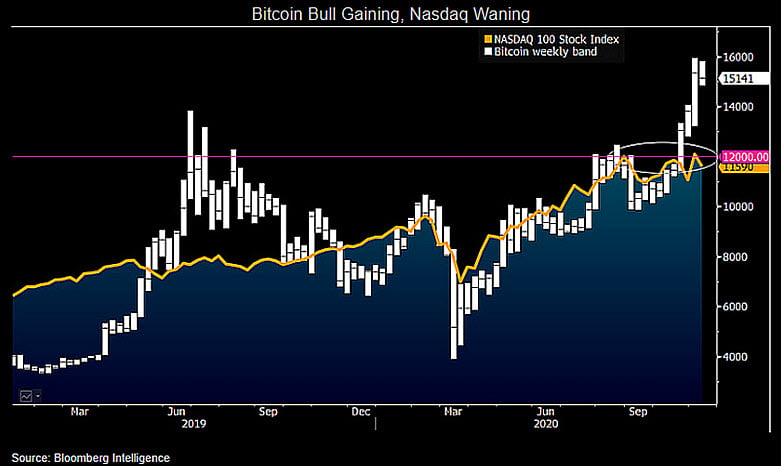2022-2-9 22:10 |
The Investor’s Intelligence Index is a widely-accepted mechanism to discover the power stability between bull and bear sentiments in markets; its primary objective is to help the investors understand market sentiments with the hope of predicting future market conditions.
When we think of bull and bear markets, we consider the predominant phases of any stock market cycle. Bull markets see prices going up, whereas bear markets see prices going down. However, bull markets tend to favor sellers, who can sell their assets at higher prices, whereas bear markets favor buyers, where buyers can buy assets at a lower cost.
There are a variety of methods to utilize the investor’s intelligence index. Rather than there being one single predictive oracle that spits out a binary “bull or bear” sentiment, an investor’s intelligence index is an amalgam of sentiments across various forms of media.
Most indices rank various indicators in a pool of sentiments. For instance, one may heavily favor established media presences and newsletters by licensed financial advisors, whereas some indices may give more weight to an aggregate sentiment spread through social media.
Since cryptocurrency is such a new asset class, the best approaches for gauging investors’ intelligence are still being worked out. For example, in the ICO craze of 2017-2018, social media was a very popular means to gauge which projects may emerge as home runs. This was all for better or for worse, as many pump and dump schemes began to use bot accounts or otherwise manipulate sentiments for speculative purposes.
How Do You Measure Investor Sentiment?When people talk about investment sentiment or market sentiment, they refer to the investment community’s aggregate attitude. It’s often used by short-term traders or technical analysts whose primary objective is to profit from short-term movements in stock prices.
The investor sentiment is essentially a snapshot of the stock market’s perspective at an instant. Many quantitative methods have been developed to assist the investors in comprehending the market sentiment.
Chartcraft, introduced by Abe Cohen in 1965, aimed to provide a technical approach to understanding the underlying mechanics of stock and commodity trading. The approach is actually contrarian in nature, intending to determine reliable signals that support acting opposite to general market sentiment.
For example, rather than determining that one should BUY during a bull market, these sentiments would determine to SELL while prices are up, in anticipation of future falling of prices.
When bulls dominate the market, Chartcraft uses a negative ranking system, from -1 to -10.
When bears dominate, the rankings are between +1 and +10.
If the sentiment is that bulls are 51% or more in the market, -1 is assigned to indicate the market sentiment, and when it exceeds 60%, -10. When the bulls drop down to 45% or lower, +1 ranking is assigned, while +10 is ascribed when the bulls fall to 36% or below.
The ranking system actually only reaches a maximum of -20, and the ranking stays active for almost three months. If the bears exceed 55%, an extra +10 is added to the ranking for the next six months.
The highest level of bullishness recorded yet was on December 24, 1994.
Final Thoughts: Is Relying on the Investors Intelligence Index Intelligent?It’s incredibly difficult (theoretically impossible) for anyone to predict the granular swings of a market with perfect accuracy, so it’s important not to give too much mental credence to the variety of attempts at doing so. However, approaches like the investor’s intelligence index can at least provide a framework for analyzing whether or not your model has any predictive power.
The investors’ intelligence index is one of the more popular techniques for this. The index was introduced in the 1950s and has been iterated on since. Its application and relevance to cryptocurrency are still to be determined. The investor’s intelligence sentiment index gauges the reaction to crucial events and the milestones of the market.
Observing the changes in the sentiment, the investors strive to decide whether the market stand is too bullish, too bearish, or somewhat neutral. Investors could utilize the accurate measurement of the market’s sentiment for their benefit. When the ranking indicates extreme bullishness in the market, an investor could interpret this information as the market would soon undergo a correction before returning to the normal sentiment state.
The utility of the investor’s intelligence index varies for short-term and long-term traders.
The success rate of the investment strategy could rely on your potential to balance information from various sources and utilize the knowledge according to your personal goals and needs.
The post What Is the Investor’s Intelligence Index: Does It Work for Crypto? appeared first on CoinCentral.
origin »Intelligence Quotient Benefit (IQB) на Currencies.ru
|
|


